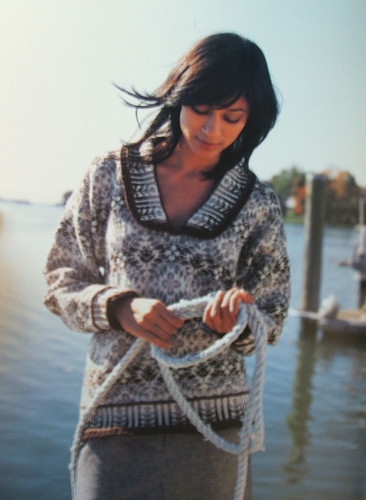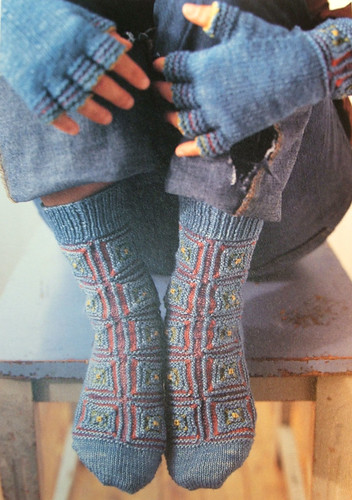In this tutorial I hope to help you understand how the placement of yarn overs and decreases and which yarn overs and decreases you use will change the lace’s structure.
*Note* For all of these charts, the legend can be found here.
If you missed it, click here for Part I: Directional Decreases or here for Part II: The Shape of the Fabric.
Part III: Patterning on WS Rows
In all of the previous swatches, the patterning has only been on the right side rows. So what about patterning on the wrong side rows, eh?
Swatch 12


This is the same basic pyramid as Swatch 1, but we’ve removed the non-pattered WS rows to make patterning on every side. As you can see, the pyramid is completed in fewer rows and the angle of the line of decreases is more steep.
When working in the round, patterning on every side is easy because you are looking at the right side of the fabric at all times. But when you are working flat, it gets tricky.
Charts are usually made to look like a pictorial version of what the finished piece should look like from the Right Side. That is why a left leaning decrease is a left leaning line and a yarn over looks like a round hole. If you will notice in the chart above, the decreases on the wrong side rows (2, 4 & 6) still look the way they will look when you view the piece from the right side of the fabric, but when you work them, you have to work them in a different way to make them appear correctly on the RS. If you worked a k2tog on the back of the piece, it certainly wouldn’t look like a k2tog when you flipped it back over to the RS.
But because knit and purl are just opposites (a purl is a knit when looked at from the other side and vice versa), you can still work decreases on the WS that will be the same as the RS decreases when viewed from the RS. In fact, each decrease has its WS counterpart. Some of them are easy to remember and easy to work, while some are more complicated and tricky to remember. But here’s a table for reference.
For the table, the Right Side shows the stitch as it is worked on the right side, in the Wrong Side column, it shows the equivalent stitch to be worked on the WS to equal the RS stitch.
The stitch position column for the double decreases assumes that you are counting stitches from right to left on the RS of the fabric so the first one you encounter as you are knitting is 1, the next is 2, etc…

Clearly, some of these will hardly ever be used by the average knitter, but try out some swatches some time and see what you find.
A Note about Twisted Stitches.
I cannot finish this tutorial without addressing the issue of twisting stitches. Mary Thomas’ Book of Knitting Patterns says that each slipped stitch in a decrease must be slipped as if to knit or else they will be twisted. You will also notice that I have included an “easy out” for the single decreases on the table above. These are decreases that will give the correct directional leaning, but are not truly the reverse of the RS decrease. A P2tog tbl, while faster to work than the given decrease, twists the stitches in the process of decreasing them. While there is nothing inherently wrong with twisting stitches, the problem arises when you block the finished piece. Especially with lace, if you have a twisted decrease paired up with a non-twisted decrease, the lines created in the final lace WILL NOT BE THE SAME. They won’t block out to look the same and for myself, they would drive me crazy! If you were using these decreases in a sweater that wouldn’t be blocked severely then it wouldn’t make such a difference, but with lace, it becomes more obvious because of the larger needle size, space between strands of yarn and the blocking process.
For this reason, I disagree with many designers that a k2tog tbl can be used as a left leaning decrease in place of an ssk or sl1, k1, psso. Twisting stitches fundamentally changes the tension in a piece of knitted fabric. By twisting a stitch, it stands out more from the work, the stitches around it are pulled in ways they would not be if the stitch wasn’t twisted, and the twisted stitches (and the area around them) will block differently than the non-twisted decreases.
Knowing the different ways to manipulate stitches will seriously increase your understanding of your knitting. And when you understand the way the yarn moves to create the stitches and the variations that are possible, it’s much easier to adapt a pattern, tweak some shaping, and design something from your imagination than it would be otherwise.
I hope you’ve enjoyed this tutorial. I’d love your feedback in the comments.
Click here for Part I: Directional Decreases
Click here for Part II: The Shape of the Fabric

































